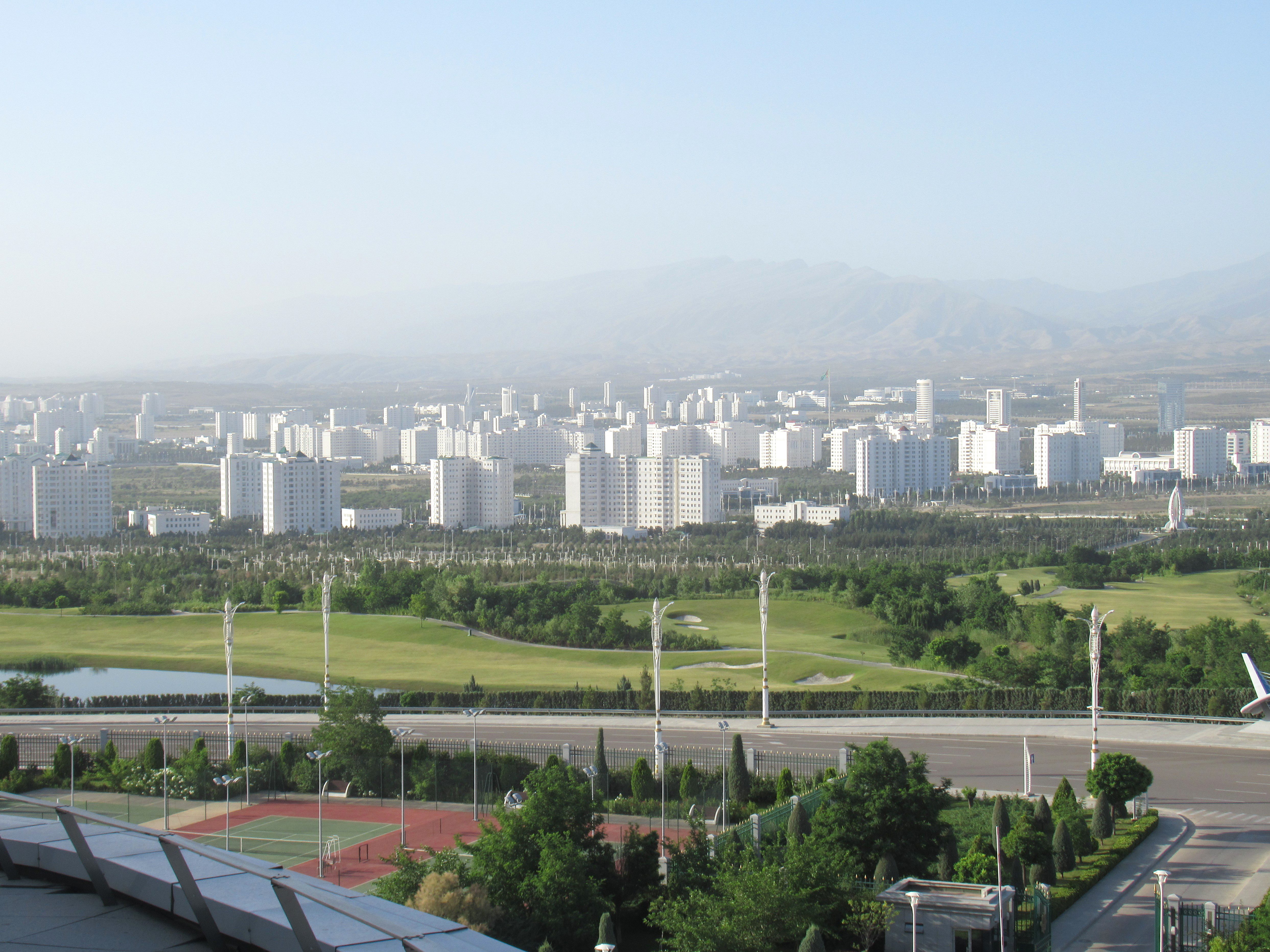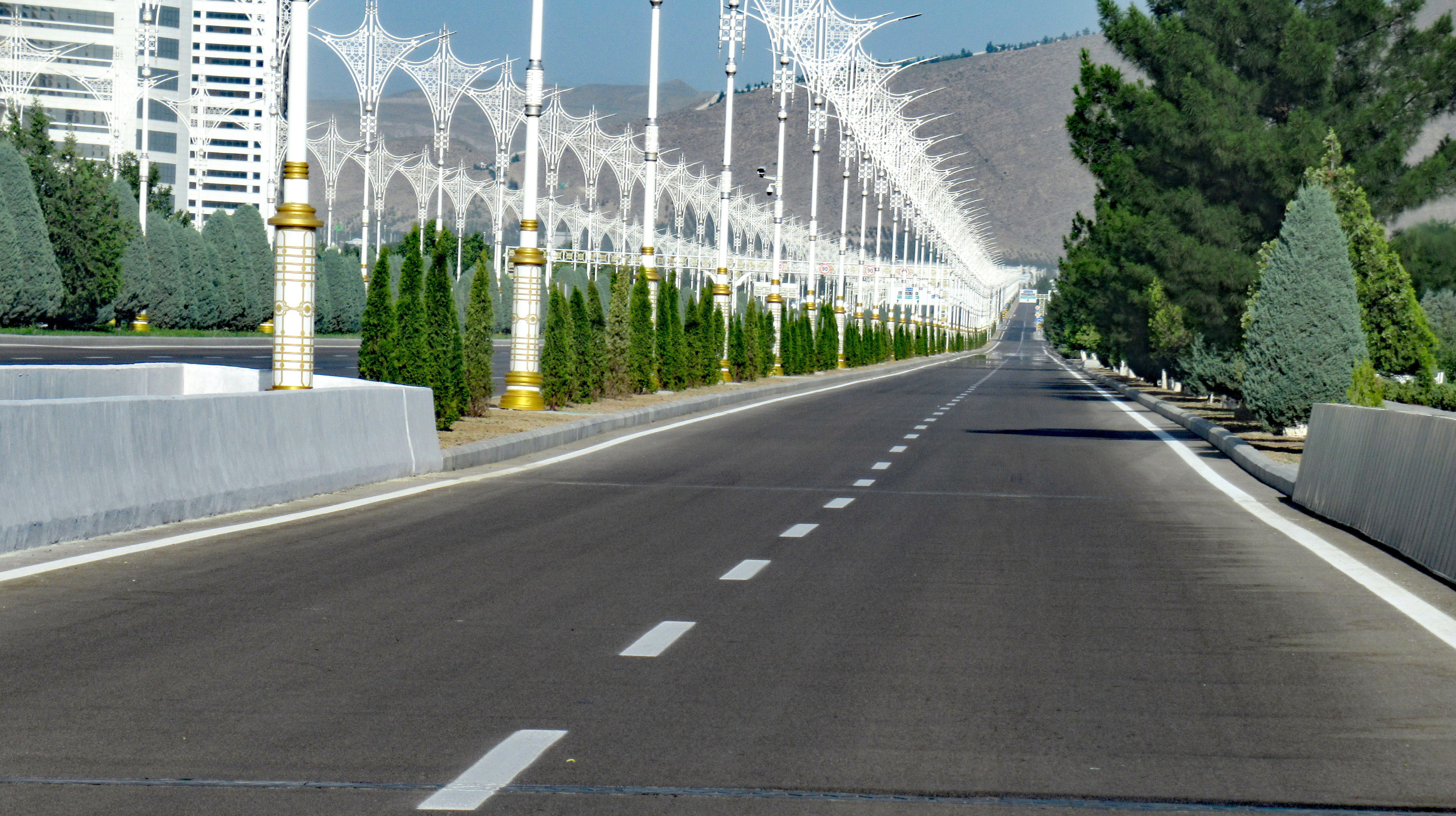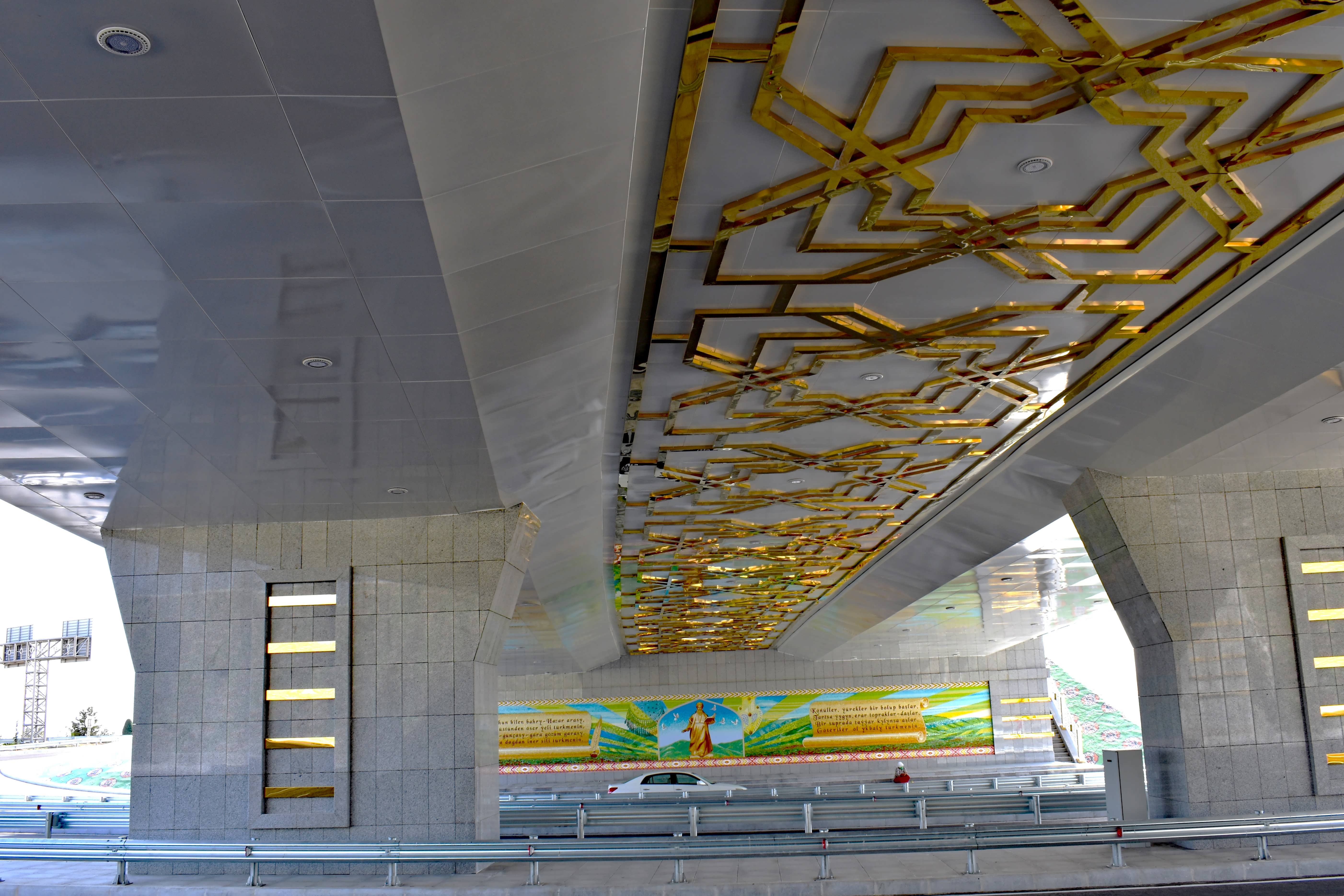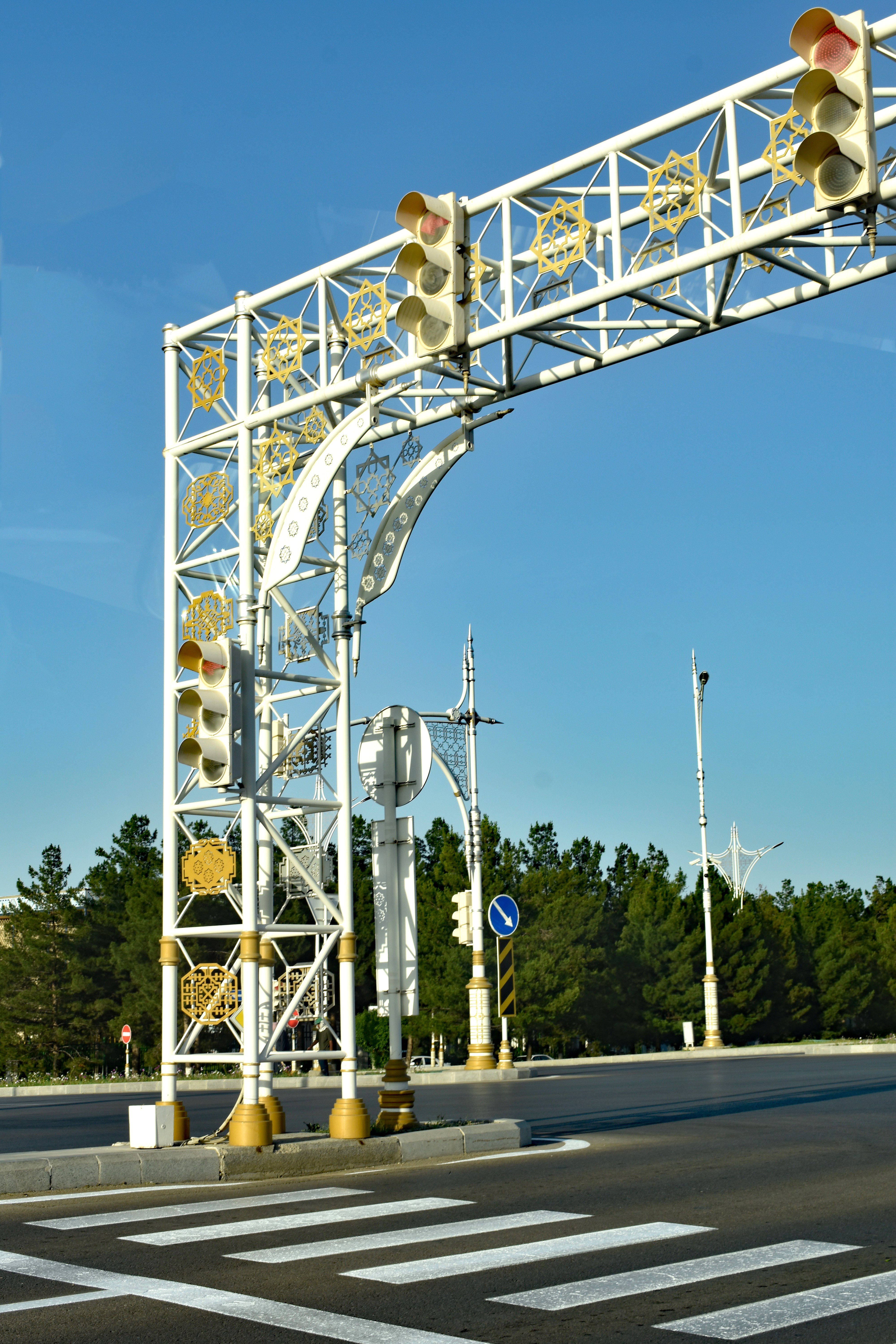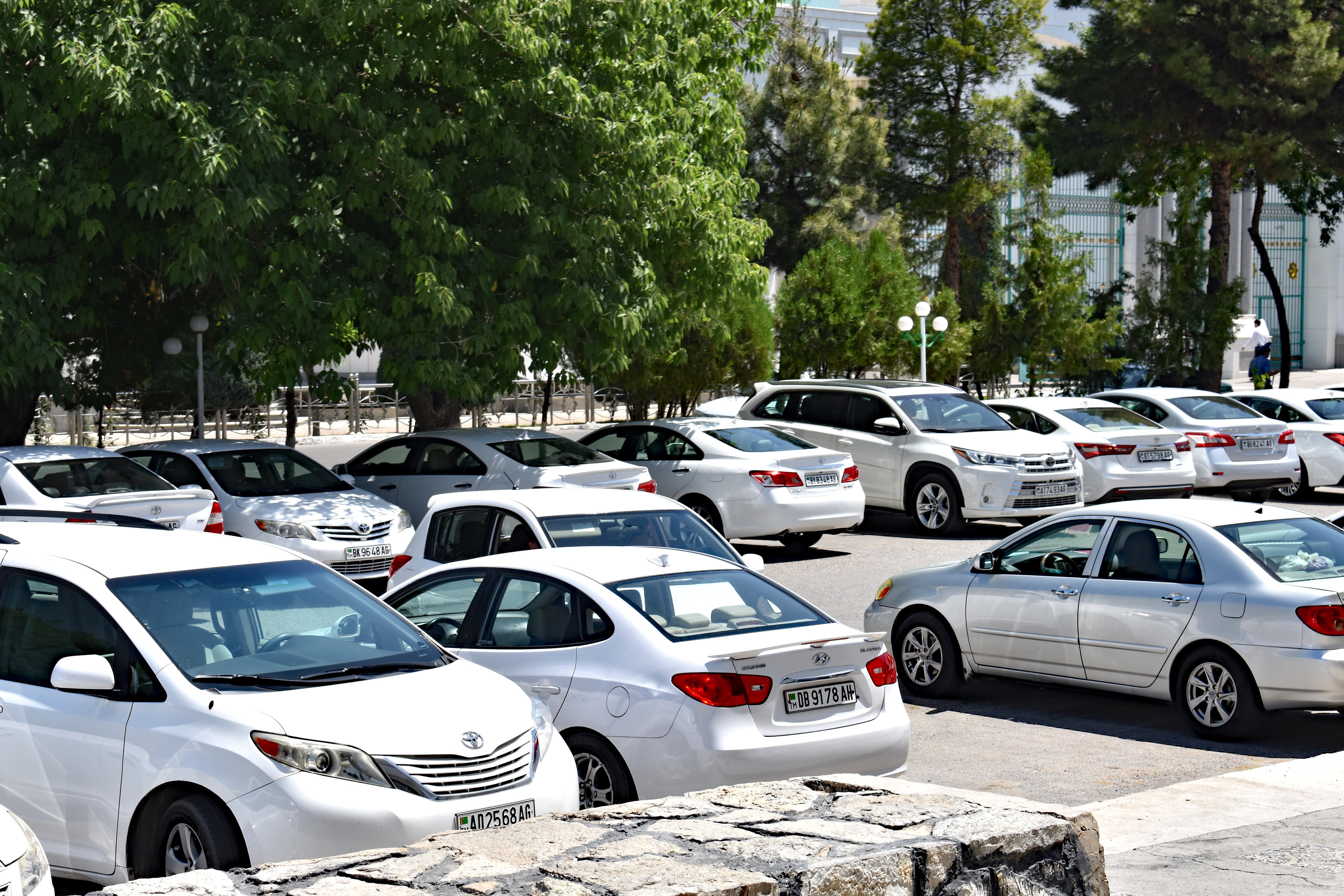The City of White Marble and the City of the Dead are just two contrasting descriptions for Turkmenistan’s capital, Ashgabat.
After gaining independence in 1991, the first president, Saparmurat Niyazov, who styled himself Turkmenbashi, founded new Ashgabat in the early 2000s. He decreed that buildings should be constructed from elegant white marble which would reflect summer sunlight, and lighten the population’s mood in gloomy winter weather. Although I knew Ashgabat held the Guinness World Record for the ‘highest density of white marble-clad buildings’, I was unprepared for all of them being white: the only exception appeared to be the cream, two-storey buildings in the old city.
However, bizarrely at night, these white buildings were illuminated with colourful flashing lights, turning it into a Las Vegas lookalike. For example, the ‘Ashgabat Olympic Stadium’ was lit with a huge horses head, to reflect Turkmenistan’s famous Akhal Teke horses, whilst coloured horses appeared to gallop around it. And if you’re wondering when Turkmenistan hosted the Olympic Games, they didn’t: the ‘Olympics’ they refer to was the 2017 Asian Indoor and Martial Arts Games.
White buildings were not the only quirk. In 2018, the second president, with the wonderfully unpronounceable name Gurbanguly Berdymukhamedov, banned coloured cars from the city. Theories abound as to the reason, but my favourite is that he was knocked down by a black car and became superstitious. When I asked about the colour of fire engines, the question seemed to stump our guide, and we never encountered one to find out.
Everything was grand: infrastructure like lamp posts, traffic light stanchions, railings etc were painted white and gold; bus stops were air conditioned; and many underpasses were covered with colourful mosaics.
The city was immaculate and at many junctions, groups of people with high-vis jackets and hats to protect from the heat, were weeding flower beds or picking up non-existent litter. Questions about employment and unemployment rates were brushed aside.
Police, wearing huge hats, abounded on junctions and at the roadside, and in our two days in the city, we were stopped four times. In other countries, our tourist vehicles have elicited a smile and a friendly wave through, but in Ashgabat, we felt we attracted even greater attention.
Weddings were flamboyant and we saw several pre-wedding and actual wedding photo shoots against a backdrop of city sights with the waiting wedding cars being extravagantly decorated with jewels and flowers.
Although we visited several places, much of our sightseeing was from the car, as places were spread out and temperatures were nearly 40 degrees. Our guide pointed out buildings we could not photograph, even from our vehicle, and when on foot and approaching guarded monuments, there was a point when cameras had to be put away. and we felt there was a degree of control over what we saw.
